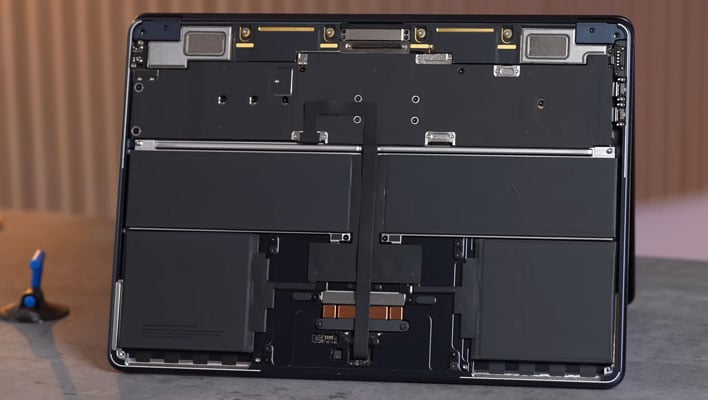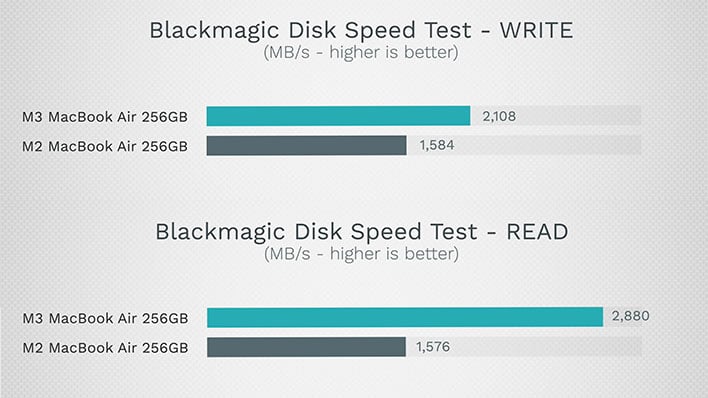M3 MacBook Air Teardown Reveals Apple Solved M2 Model's Biggest Issue

Apple recently refreshed its MacBook Air lineup, infusing the latest models with its custom M3 processor, faster Wi-Fi connectivity, and the ability to support two external displays at up to 5K and 60Hz with the lid closed (or a single external display at up to 6K and 60Hz with the lid open). All good stuff, but one of the biggest upgrades to the M3 model is something that Apple isn't even talking about, even though it can substantially improve performance in certain situations.
That upgrade is a reversal back to using two NAND flash memory chips for storage chores on the entry-level configuration, just like the M1 MacBook Air. For some dopey reason, Apple decided to saddle its baseline M2 MacBook Air with just a single NAND chip, leaving it starved for bandwidth under heavier workloads. The folks behind the YouTube channel Max Tech demonstrated this at the time with a series of tests and benchmarks.
We can only speculate as to why Apple made that decision, and from our vantage point, it looked like an artificial performance penalty to encourage buyers to select a higher-end (and pricier) configuration. Whatever the reason, it was disappointing.
Well, fast forward to the refreshed M3 MacBook Air and Apple has apparently reversed course, which Max Tech once again demonstrates in a fresh teardown. Have a look...
You can fast forward to the 7min40sec mark for the start of the money shot, which reveals that the entry-level M3 MacBook Air is using two NAND chips for its SSD storage rather than a single chip. However, the 10-minute video is worth a watch in its entirety, as it contains some interesting benchmark comparisons that highlight why exactly this matters.
"We did it, we one; Apple listened," the channel's host Vadim Yuryev emphatically states. "There we have two NAND chips. They went back and this cost Apple more money. Believe it or not, a single 128 gig NAND actually costs more than a 256. Now they have two 128 gigs here, which means it's more than double the price compared to before where they just used one for the same capacity."
It's a huge win for buyers who are interested in the least expensive model. How big, exactly? Well check out these read and write speed comparisons...

Source: Max Tech (YouTube)
According to Max Tech's testing, in the Blackmagic Disk Speed Test benchmark, the baseline M3 MacBook Air's write performance is 33% faster than the M2 model, while the read performance is nearly 83% faster.
Granted, this isn't something that will be noticeable when just tooling around macOS or when performing lightweight chores. But for storage-bound duties, the move to two NAND chips is a substantial upgrade and, when combined with the other upgrades, helps justify the $100 launch price difference compared to the previous generation M2 model.
The 13-inch M3 MacBook Air is available starting at $1,099, while the 15-inch model starts at $1,299, both with 8GB of RAM and 256GB of SSD storage.
Top and Thumbnail Image Source: Max Tech (YouTube)

